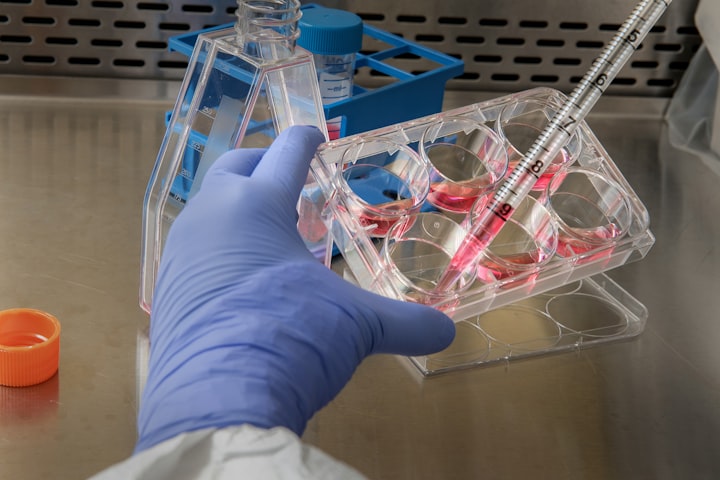Biochips As a New Method Of Diagnosing Diseases
Modern medicine pursues a very important goal. It should timely determine the presence of all possible risks of developing a particular disease.
Due to this, it is possible to find pathologies at the earliest possible stage and begin treatment suitable in each individual case. Of course, many studies of all human organs can be carried out, but the cost of all procedures will be high.
In this case, you will have to spend a lot of time additionally, and the disease will only progress. In this regard, scientists have developed special biochips, with the help of which many biomarkers can be detected in just one analysis. These are special compounds that indicate the presence of a certain pathology, the risk of its development, or the malfunctioning of individual organs.
How does a biological microchip work?
For the first time, they began to talk about the development of a biological chip back in the 80s of the last century. When the device was created, it was a matrix of cells, each of which contains a specific probe capable of recognizing a specific target and analyzing the resulting sample in detail. The sample molecules must undergo pre-treatment and are also marked with a fluorescent dye. Then it is introduced into the chip chamber and penetrates into the cells. After that, the interaction between the probes and the sample begins.
The process uses light irradiation, which has a certain wavelength. Those cells of the biochip, in which the interaction has a specific character, begin to fluoresce. This reaction is recorded by specialists using a special analyzer-microscope. Further, in each individual cell, it is necessary to calculate the indicator of the intensity of the signals that have arisen, and, taking into account the algorithm developed earlier, to establish the presence of a target. It can be a microorganism, a chromosomal rearrangement, a virus, a tumor marker, a mutation, and much more. With the help of such a complex but effective process, it is possible to select the appropriate treatment for a particular patient in the shortest possible time.
In order to be able to make a matrix of cells of a modern biochip, experts use the transfer of droplets of a mixture from probes and hydrogel onto a plastic substrate. For this, modern equipment is used, represented by incredibly thin metal rods, which are equipped with a special mechanical robot.
Drops of this type are able not only to move but also to merge on a substrate with a hydrophobic surface. That is why they need additional fixation using a photopolymerization reaction. In this case, there is a rapid formation of covalent bonds between the droplet and the applied substrate. The probe and hydrogel monomers are also fixed together. To achieve this result, specialists carefully irradiate the substrate with light having a certain wavelength. At the same time, incredibly strict irradiation conditions are observed. Without fail, parameters such as humidity and temperature, the presence of an inert gas capable of removing oxygen molecules are taken into account. Do not forget about the exposure time.
The influence of ultraviolet radiation makes it possible to achieve polymerization of molecular probes with the main components that make up the hydrogel. Thus, the probes are able to be evenly distributed over the used volume of gel. This process is called immobilization.
Hydrogel and substrates for biological microchips.
Cells for biological chips are formed on the glass, which is pre-coated with a monomolecular layer of a special substance. It contains active groups of chemical origin that can interact with the probes that are applied in the future. Russian engineers use plastic substrates for hydrogel chips. Due to this, it turns out to make the process of manufacturing matrices cheaper. Some time ago, special molds were created, which also speed up the production of substrates, as well as reaction chambers present in the biochip. The process is carried out by applying the method of casting under huge pressure. Such developments made it possible to achieve the necessary technical independence in this area.
A very important point, if we consider the domestic technology of biological chips, is that specialists use a specially developed hydrogel, in which the necessary probes are placed. It has recently been possible to achieve a significant indicator of the immobilization capacity of probes located in hydrogel cells. Due to this, many signals are registered that cannot be fixed if flat glass matrices are used. This affects the fact that cheaper analyzers can be used in research.
The hydrogel cell is three-dimensional, so the interaction between the probe and the molecule will be more efficient and at the same time specific. Physicians can thus establish the presence of very important markers that have a high specificity rate. The result is provided in the most simple format — yes/no.
The development of biochips continues, and in the future, specialists will be able to use them to find markers of inflammatory processes that may indicate the presence of endocrine or rheumatological pathologies. It will also be possible to more easily and quickly establish the presence of problems with the immune system at the earliest possible stage in the development of a disease.
About the Creator
Michail Bukin
Creative Writing Expert and Ambitious Stutterer







Comments
There are no comments for this story
Be the first to respond and start the conversation.